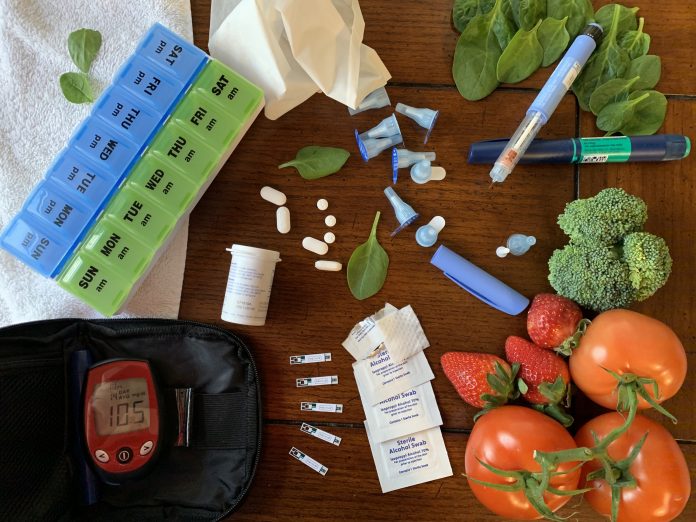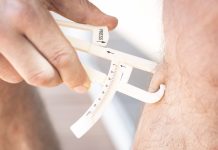Here the InBody Clinical Team explain how improved body composition can help fight type 2 diabetes
The more you look at the statistics, the more it seems that type 2 diabetes (T2D) might be one of the quietest epidemics in recent medical history. What used to be seen as a disease that affects primarily adults now appears in children and teens with frightening frequency.
And the future isn’t looking much brighter. Studies predict that the situation could continue to worsen over time, with the number of people diagnosed with diabetes increasing dramatically.
What’s going on, and what role does body composition have in developing or preventing diabetes?
Quite a lot actually. And, as is usually the case, the starting point is taking a deeper look into bodyweight to understand how it misleads so many people.
Diabetes – Not just a heavy person’s disease
For many years, T2D was thought to be a lifestyle-caused disease linked primarily to obesity. While it’s true that obesity rates have risen together with diabetes cases, there’s a major outlier that’s changing the way how one develops diabetes is understood. People with so-called “skinny-fat” bodies are developing diabetes to such a degree that they’re now identified as an entirely “new” population that’s at risk for developing diabetes.
Skinny-fat people are characterised as having a normal weight, overdeveloped body fat mass, and underdeveloped muscle mass. An example of body composition breakdown for a skinny fat person would look something similar to this (chart below):
Notice the low levels of muscle and high levels of body fat? Both of these can contribute to the onset of diabetes, but they do so in different ways.
Characteristics of diabetes
The simple sugar that cells rely on, glucose is the result of digestible carbohydrates being broken down and absorbed into the bloodstream. Rises in blood sugar levels are the catalyst for you to make and release insulin. Insulin is a hormone that allows your body to use the glucose derived from your food.
Unlike in type 1 diabetes, where your body doesn’t actually produce sufficient insulin, T2D occurs when your body can’t properly use the insulin it makes. This is called insulin resistance, which over time typically requires that diabetics take supplemental insulin.
So where does muscle fit into this conversation? Turns out your muscle mass – or your lack of it – can play a major role in developing insulin resistance. Sarcopenia, the medical term for underdeveloped muscle and a characteristic of skinny fatness, has been linked with increased insulin resistance and the development of T2D – independent of obesity itself.
This greatly helps explain the rise in cases of prediabetes and diabetes – it’s not something only developed by overweight or obese people. People with little muscle mass, but a normal body weight created by the compensating overdeveloped body fat, share the same risk. What’s worse, once T2D does set in, diabetes itself has a very damaging effect on skeletal muscle mass which compounds the problem further.
But of course, muscle mass is just one part of a poor body composition that can put someone at risk of developing diabetes. Increased body fat still does play a major role in the development of diabetes, and it’s a characteristic shared by both skinny fat people and those who have both high body weights and high body fat percentages.
Lessening diabetes risk with improved body composition
Diabetes is a serious disease, and depending on the severity of it, can require different combinations of medications, lifestyle interventions, or both.
While no one is suggesting that you can simply diet and exercise your way out of diabetes, it is true that with lifestyle changes and a modest bodyweight reduction of 5-10%, T2D is largely preventable.
This is definitely good news; however, statistics like these lend themselves to an often counterproductive focus on body weight as the only measuring stick of progress.
So instead, let’s have a look at how improvement to your body composition (your fat mass, your muscle mass, etc.) can have an impact on diabetes.
Body fat
To better understand the importance of glycemic control and its relation to improved body composition, take a look at a recent study that focused on the changes in fasting plasma glucose.
Patients with T2D were kept track of for 6 months, with body composition (visceral fat area, body fat mass, and percent body fat) being assessed. The purpose of this study was to evaluate the relationship between these two components (body fat and glycemic control), and the study had a pretty interesting result: decreased body fat mass and visceral fat area had an improved effect on glycemic control.
Sounds good, but what about muscle?
Muscle mass
A study conducted with Japanese type 2 diabetic patients (already with insulin resistance and cardiovascular risk factors) aimed to better evaluate the characteristics of body composition in patients with T2D.
After comparing healthy subjects and subjects with T2D, it became abundantly clear to the researchers that those with diabetes are more vulnerable to a reduction in skeletal muscle. That being said, there was an interesting form of intervention. Apparently, instruction in exercise (which includes resistance training) was seen as a worthwhile treatment to prevent the continued degeneration of muscle.
A second study offers even better news, going beyond simply the prevention of degeneration of muscle (and the spiral of increased insulin resistance that comes with it). Diabetics who trained for 30 minutes a day, 3 times a week were shown to have increased glucose clearance as a result of their increased muscle mass. That’s because this increased muscle mass signalled to the body to release more insulin – lowering blood sugar.
Here’s something even more bottom line: in diabetics, for each 10% increase in skeletal muscle index (ratio of skeletal muscle to body weight), there was an associated 11% increase in glucose sensitivity.
It seems clear that you can benefit from improved body composition, and the best part about that is that’s directly under your control.
Please note: This is a commercial profile
Contributor Details
Editor's Recommended Articles
-
Must Read >> The relationship between diabetes and muscle mass











